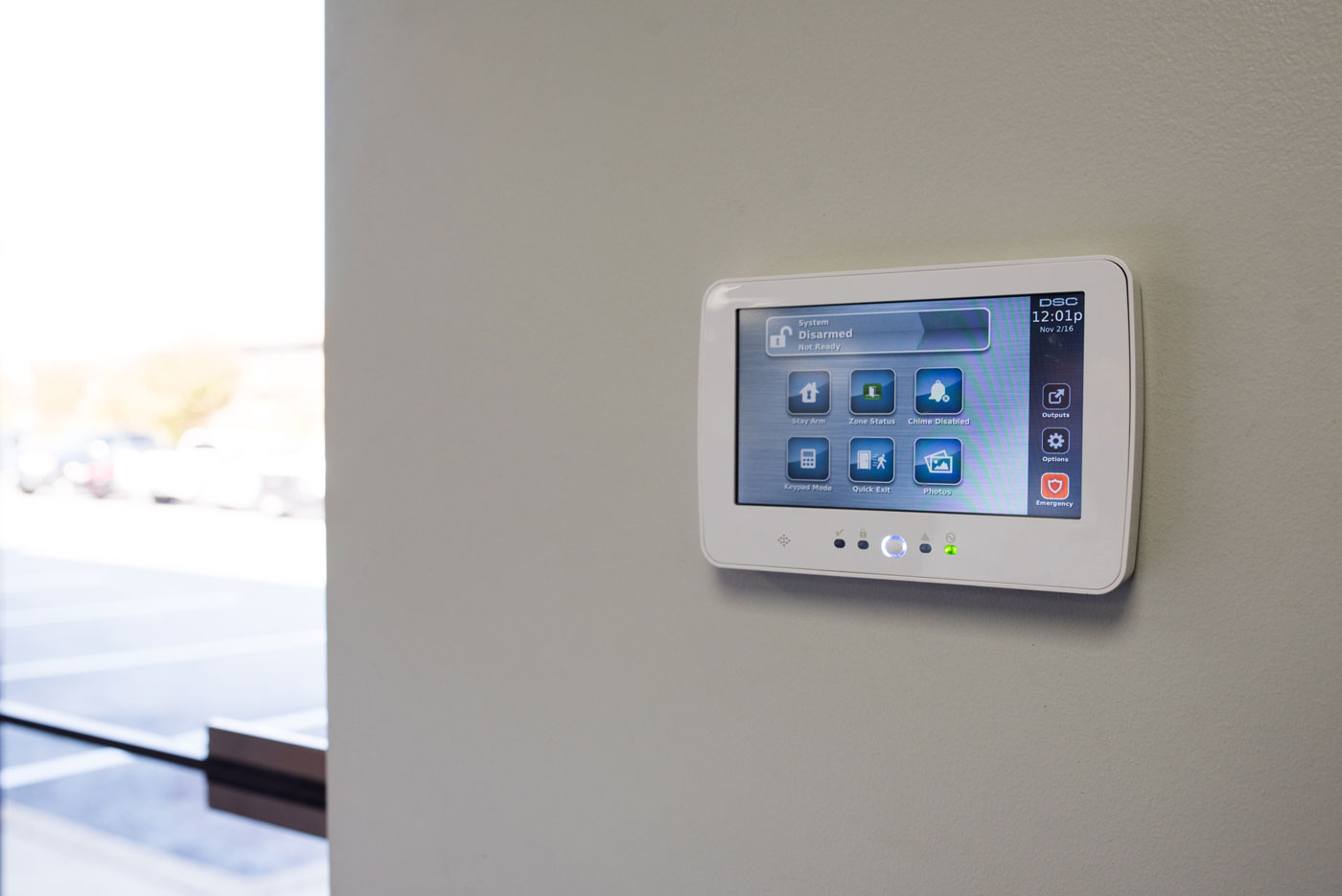Home>Home Security and Surveillance>What Are The Advantages Of Host-Based Intrusion Detection


Home Security and Surveillance
What Are The Advantages Of Host-Based Intrusion Detection
Modified: March 6, 2024
Discover the advantages of host-based intrusion detection for ultimate home security and surveillance. Protect your home from cyber threats with this advanced technology.
(Many of the links in this article redirect to a specific reviewed product. Your purchase of these products through affiliate links helps to generate commission for Storables.com, at no extra cost. Learn more)
Introduction
Home security and surveillance have become essential in today’s world, where threats to our safety and privacy are constantly evolving. With the advancement of technology, the options for protecting our homes and loved ones have expanded, including the use of host-based intrusion detection systems.
In this article, we will explore the advantages of host-based intrusion detection and why it is an integral part of any comprehensive home security system. Host-based intrusion detection refers to a security approach that focuses on monitoring and detecting unauthorized activities and potential threats on individual devices, such as computers, smartphones, and other connected devices, within a network.
By implementing host-based intrusion detection, homeowners can gain greater visibility into the activities happening on their devices and take proactive measures to protect their homes and personal information from potential breaches. Let’s delve into the advantages of host-based intrusion detection in more detail.
Key Takeaways:
- Host-based intrusion detection provides detailed insights into individual device activities, allowing homeowners to quickly detect and respond to potential security threats, ensuring the safety of their homes and personal information.
- By monitoring and analyzing user behaviors, host-based intrusion detection systems can identify insider threats and protect unmanaged devices within the home network, offering comprehensive security and compliance with regulations.
Definition of Host-Based Intrusion Detection
Host-based intrusion detection is a security mechanism that focuses on monitoring and analyzing activities on individual devices within a network to detect any unauthorized or suspicious behavior. Unlike network-based intrusion detection systems that monitor network traffic, host-based intrusion detection systems focus on protecting the host or endpoint itself from potential threats.
These systems use various techniques, such as log file analysis, behavior monitoring, and anomaly detection, to identify potential security breaches and alert homeowners in real-time. By analyzing system logs, network connections, and application activities, host-based intrusion detection systems can detect abnormal patterns and potential signs of unauthorized access or malicious activities.
The primary purpose of host-based intrusion detection is to provide an additional layer of security by monitoring and detecting threats at the individual device level. By examining the behavior of applications, processes, and system configurations, these systems can identify indicators of compromise and potential vulnerabilities that could compromise the security of the entire home network.
Host-based intrusion detection systems work in conjunction with other security measures, such as firewalls, antivirus software, and network intrusion detection systems, to create a comprehensive defense against potential threats.
Now that we understand the basic concept of host-based intrusion detection, let’s explore the advantages it offers in enhancing the security of our homes and personal information.
Advantages of Host-Based Intrusion Detection
Host-based intrusion detection systems provide a multitude of advantages that significantly enhance the security of our homes and personal information. Let’s explore some of the key advantages below:
- Increased visibility: One of the primary advantages of host-based intrusion detection is the increased visibility it offers into the activities happening on individual devices. By monitoring system logs, network connections, and application activities, homeowners can gain insights into any suspicious or malicious behavior that may go unnoticed otherwise.
- Granular monitoring: Host-based intrusion detection allows for granular monitoring of individual devices. This means that each device can be analyzed independently, enabling the detection of device-specific threats and vulnerabilities. By monitoring at the device level, homeowners can quickly identify and remediate any security issues, reducing the chances of a widespread breach.
- Detection of insider threats: Host-based intrusion detection systems are particularly effective in detecting insider threats. These threats often originate from users with authorized access to the system or devices. By analyzing user activities and monitoring for any suspicious behavior, host-based intrusion detection can identify potential insider threats and alert homeowners in real-time, allowing for immediate response and mitigation.
- Quick response time: With real-time monitoring and alerts, host-based intrusion detection systems enable homeowners to respond quickly to potential security breaches. By receiving immediate notifications of suspicious activities or attempted attacks, homeowners can take swift action, such as isolating the compromised device or blocking unauthorized access, minimizing the impact of the breach.
- Protection for unmanaged assets: In today’s connected homes, multiple devices are often connected to the network, ranging from smartphones and tablets to smart appliances and IoT devices. Host-based intrusion detection systems protect all these devices, including unmanaged assets that may not have dedicated security measures installed. This comprehensive protection ensures that every device within the home network is monitored for potential threats and vulnerabilities.
- Compliance with regulations: Host-based intrusion detection systems can assist homeowners in meeting regulatory compliance requirements. Many industries, such as healthcare and finance, have strict regulations regarding data privacy and security. By implementing host-based intrusion detection, homeowners can demonstrate their commitment to securing personal information and adhere to relevant regulatory requirements.
By harnessing the advantages of host-based intrusion detection, homeowners can significantly strengthen the security of their homes and personal information. These systems provide a proactive defense against potential threats, offering peace of mind and safeguarding against unauthorized access and malicious activities.
Increased visibility
One of the primary advantages of host-based intrusion detection is the increased visibility it offers into the activities happening on individual devices within a home network. Unlike traditional security measures that focus on network traffic, host-based intrusion detection systems provide detailed insights into the behaviors of each device connected to the network.
By monitoring system logs, network connections, and application activities, homeowners can gain a comprehensive understanding of the normal behavior patterns of their devices. This enhanced visibility allows for the early detection of any abnormal or suspicious activities that may indicate a security breach.
Host-based intrusion detection systems continuously analyze and monitor various aspects of the device’s behavior, such as file modifications, network connections, and application executions. By comparing this information to pre-established baselines or known patterns of malicious activity, these systems can identify potential indicators of compromise.
For example, if a device suddenly starts making a large number of unauthorized network connections or exhibiting abnormal file modifications, the host-based intrusion detection system will raise an alert. Homeowners can then investigate further and take necessary actions to mitigate potential risks.
Additionally, the increased visibility provided by host-based intrusion detection systems can aid in identifying malware infections or unauthorized software installations. By monitoring for the presence of known malware signatures or suspicious behavior, these systems can detect and alert homeowners to potential threats in real-time.
Having this level of visibility allows homeowners to be proactive in their security measures. They can quickly identify and respond to potential threats before they escalate, reducing the impact of a breach and minimizing the risk of sensitive information or personal data being compromised.
In summary, increased visibility provided by host-based intrusion detection systems empowers homeowners to have a clear understanding of the activities happening on their devices. This real-time monitoring and analysis enable early detection of security threats, allowing for swift response and mitigation actions.
Granular monitoring
Host-based intrusion detection systems offer the advantage of granular monitoring, allowing for a detailed analysis of individual devices within a home network. This level of monitoring enables homeowners to have a more targeted approach towards protecting their devices and data.
With granular monitoring, each device within the network is analyzed independently, providing a focused view of its activities and potential security risks. This means that threats specific to a particular device can be detected and addressed without impacting the security of other devices.
Host-based intrusion detection systems monitor various aspects of a device’s behavior, including file changes, network connections, and the execution of applications. By closely examining these activities, the system can identify anomalies or suspicious behavior that may indicate a security breach.
For example, if a laptop within the network starts exhibiting unusual file modifications or establishes connections with suspicious IP addresses, the host-based intrusion detection system can quickly raise an alert. This granular level of monitoring allows homeowners to swiftly investigate the specific device and take appropriate actions to mitigate potential risks.
Granular monitoring also extends to user activities on individual devices. Host-based intrusion detection systems can track user logins, account activities, and privilege escalation attempts. This functionality plays a crucial role in detecting insider threats or unauthorized access attempts.
By being able to identify and respond to threats at the device level, homeowners can better protect their sensitive data and personal information. They can isolate compromised devices, apply necessary patches or updates, or even block unauthorized access, all without disrupting the operation of other devices within the network.
In summary, the granular monitoring provided by host-based intrusion detection systems allows homeowners to have a focused and targeted approach towards protecting their devices. By closely examining individual behaviors, anomalies can be detected and addressed promptly, minimizing the potential impact of security breaches on the entire network.
Tip: Host-based intrusion detection systems offer the advantage of monitoring activity on individual devices, providing detailed insight into potential threats and attacks specific to that device. This can be especially useful for detecting insider threats and unauthorized access.
Detection of insider threats
Host-based intrusion detection systems excel at detecting insider threats, which are security risks that originate from individuals with authorized access to the system or devices within the home network. These threats can come from employees, family members, or other trusted individuals who may misuse their privileges or intentionally compromise the security of the network.
By closely monitoring user activities and behaviors, host-based intrusion detection systems can identify any suspicious actions or deviations from normal patterns. This includes tracking login attempts, account activities, and any unauthorized access attempts to sensitive files or resources.
For example, if an employee with access to the home network suddenly attempts to access restricted files or perform actions beyond their authorized scope, the host-based intrusion detection system will raise an alert. Homeowners can then investigate the incident to determine if it’s a genuine mistake or a potential insider threat.
Additionally, host-based intrusion detection systems can detect activities such as data exfiltration or unauthorized attempts to modify system configurations. These actions may indicate that an insider is intentionally stealing or tampering with sensitive data within the network.
By detecting insider threats early on, homeowners can take necessary action to prevent further damage and protect their valuable information. This may involve revoking access privileges, implementing stronger security measures, or conducting investigations to identify the individuals responsible for the unauthorized actions.
The ability to detect insider threats is crucial for maintaining a secure home network environment. It helps prevent data breaches, intellectual property theft, or any other unauthorized actions that can harm the overall security and integrity of the network.
In summary, host-based intrusion detection systems play a vital role in detecting and mitigating insider threats. By monitoring user activities and behaviors, these systems can identify suspicious actions and provide early warning, allowing homeowners to take appropriate measures to protect their network and sensitive information.
Quick response time
One of the significant advantages of host-based intrusion detection systems is their ability to provide a quick response time when it comes to identifying and mitigating potential security breaches. These systems are designed to monitor devices in real-time, analyzing activities and comparing them to known patterns of malicious behavior.
When a host-based intrusion detection system detects any suspicious activities or behaviors that deviate from normal patterns, it immediately generates an alert. This alert is then promptly sent to the homeowner or designated personnel, ensuring that they are notified of the potential security threat.
By receiving real-time alerts, homeowners can take immediate action to address the security issue before it escalates. This allows them to mitigate the potential damage caused by an attack and potentially prevent sensitive information from being compromised.
Depending on the severity of the alert, the homeowner can isolate the affected device from the network, block network connections to prevent further unauthorized access, and initiate an investigation to determine the root cause of the breach.
The quick response time provided by host-based intrusion detection systems is crucial in minimizing the impact of a security incident. By addressing the issue promptly, homeowners can prevent further compromise of their network and prevent any potential damage to their devices or data.
Furthermore, quick response time is vital in thwarting active attacks that may be in progress. For example, if a hacker gains unauthorized access to a device within the network, the host-based intrusion detection system can detect this activity and raise an alert in real-time. The homeowner can then take immediate steps to block the attacker’s access, limiting the potential harm they can cause.
In summary, the quick response time provided by host-based intrusion detection systems enables homeowners to respond swiftly to potential security breaches. This helps prevent further damage and protect sensitive information, maintaining the integrity and security of the home network.
Protection for unmanaged assets
Host-based intrusion detection systems provide an essential advantage by offering protection for unmanaged assets within a home network. Unmanaged assets refer to devices that may not have dedicated security measures or management systems installed, such as IoT devices, smart appliances, or guest devices.
These unmanaged assets often have limited or no built-in security features, making them potential targets for hackers or malicious activities. However, host-based intrusion detection systems can extend their protection to these devices, ensuring that they are also monitored for potential threats.
Host-based intrusion detection systems continuously analyze the activities and behaviors of all devices connected to the network, including unmanaged assets. By monitoring network connections, application executions, and file changes, these systems can detect any suspicious or unauthorized activities.
For example, if an IoT device within the network starts exhibiting abnormal behavior, such as sending or receiving unusually large amounts of data or connecting to unauthorized domains, the host-based intrusion detection system will raise an alert. Homeowners can then investigate the potential threat and take appropriate action to protect the network and the unmanaged device.
By extending protection to unmanaged assets, host-based intrusion detection systems provide a comprehensive security solution for the entire home network. This helps prevent potential vulnerabilities or insecure devices from becoming entry points for attackers to gain access to sensitive information or compromise the overall network security.
Furthermore, protecting unmanaged assets is essential for maintaining the overall integrity and stability of the home network. A compromised IoT device, for example, can be used as a springboard to launch attacks on other devices within the network, potentially leading to significant security breaches.
In summary, host-based intrusion detection systems offer protection for unmanaged assets within the home network, ensuring that even devices without dedicated security measures are monitored for potential threats. This comprehensive protection helps safeguard the network’s integrity and prevents potential vulnerabilities from being exploited by attackers.
Compliance with regulations
Host-based intrusion detection systems play a crucial role in helping homeowners achieve and maintain compliance with various regulations concerning data privacy and security. Many industries, such as healthcare, finance, and government, have strict regulations in place to ensure the protection of sensitive information.
By implementing host-based intrusion detection, homeowners can demonstrate their commitment to data security and comply with these regulations effectively.
Host-based intrusion detection systems provide the necessary monitoring and analysis to detect potential security breaches and unauthorized activities within the home network. This level of security ensures that sensitive information remains protected and private, aligning with regulations such as the General Data Protection Regulation (GDPR) or the Health Insurance Portability and Accountability Act (HIPAA).
For example, if a healthcare provider operates from their home and stores patient information on their devices, they are required to comply with strict regulations to protect patient privacy. By implementing host-based intrusion detection, they can actively monitor and detect any potential breaches or unauthorized access attempts, demonstrating their commitment to secure data handling.
Furthermore, host-based intrusion detection can assist in auditing and compliance reporting. These systems generate detailed logs and alerts that can be used as evidence to demonstrate compliance during regulatory audits.
Host-based intrusion detection systems also offer additional security features that are specifically designed to meet compliance requirements. This may include features such as file integrity monitoring, secure log storage, and detailed reporting functionalities. These features help homeowners meet the specific requirements of different regulations and provide the necessary documentation to demonstrate compliance.
Overall, host-based intrusion detection systems not only enhance the security of the home network but also ensure that homeowners meet the necessary regulatory requirements. By implementing these systems, homeowners can protect sensitive information, maintain customer trust, and avoid potential legal and financial consequences associated with non-compliance.
Conclusion
Host-based intrusion detection systems offer a range of advantages that enhance the security of our homes and personal information. These systems provide increased visibility into device activities, allowing for the early detection of potential security breaches. Granular monitoring enables focused analysis on individual devices, ensuring that threats specific to a particular device can be addressed promptly.
Host-based intrusion detection systems excel at detecting insider threats, helping homeowners identify and mitigate security risks originating from authorized individuals. The quick response time provided by these systems allows for swift action in addressing potential breaches, minimizing the impact and preventing further compromise.
Moreover, host-based intrusion detection systems extend protection to unmanaged assets within the network, ensuring that even devices without dedicated security measures are monitored for potential threats. This comprehensive coverage enhances the overall security and integrity of the home network.
Additionally, implementing host-based intrusion detection systems supports compliance with regulations concerning data privacy and security. Homeowners can demonstrate their commitment to protecting sensitive information and meet the requirements set forth by regulatory bodies.
In conclusion, host-based intrusion detection systems are an integral part of a comprehensive home security strategy. By leveraging the advantages they offer, homeowners can enhance the protection of their homes and loved ones, safeguard sensitive information, and maintain compliance with relevant regulations. These systems provide peace of mind, enabling homeowners to proactively detect and respond to evolving security threats and ensure the integrity of their home network.
Frequently Asked Questions about What Are The Advantages Of Host-Based Intrusion Detection
Was this page helpful?
At Storables.com, we guarantee accurate and reliable information. Our content, validated by Expert Board Contributors, is crafted following stringent Editorial Policies. We're committed to providing you with well-researched, expert-backed insights for all your informational needs.













